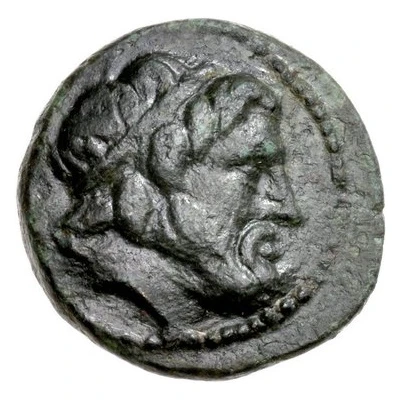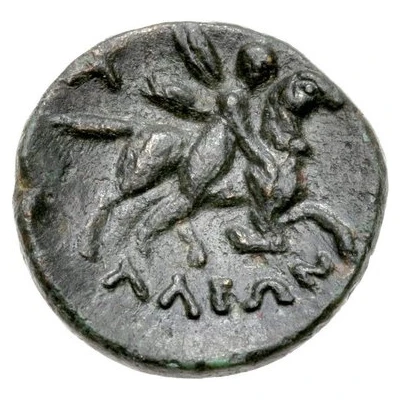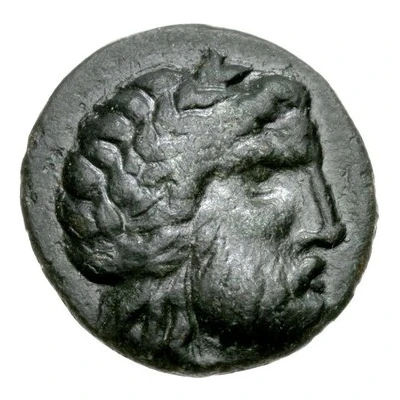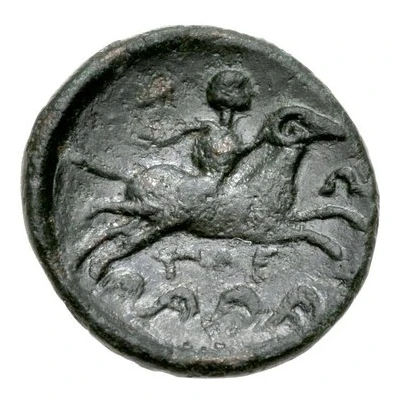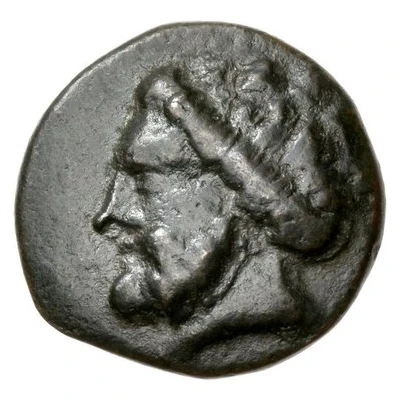


© Classical Numismatic Group, Inc.
Chalkon 302 BC - 265 BC
| Bronze | 1.8 g | 15 mm |
| Issuer | Halos (Thessaly) |
|---|---|
| Type | Standard circulation coin |
| Years | 302 BC - 265 BC |
| Value | Chalkon (1⁄48) |
| Currency | Drachm |
| Composition | Bronze |
| Weight | 1.8 g |
| Diameter | 15 mm |
| Shape | Round (irregular) |
| Technique | Hammered |
| Demonetized | Yes |
| Updated | 2024-10-10 |
| Numista | N#282580 |
|---|---|
| Rarity index | 97% |
Reverse
Phrixos, naked but for cloak billowing out behind him like wings, riding ram to right, holding onto its neck and chest; ΑΛΕΩ below circular, Ν above left.
Script: Greek
Lettering: ΑΛΕΩΝ
Interesting fact
The Chalkon coin was used in ancient Greece during the Hellenistic period, specifically in the city of Halos in Thessaly. The coin's design features the image of a horse on one side and a flower on the other. The use of a horse on the coin may have been a symbol of strength and power, as horses were highly valued in ancient Greek culture for their speed, agility, and endurance. The flower on the other side of the coin could represent fertility, prosperity, or other positive themes. Overall, the Chalkon coin is a fascinating piece of history that provides insight into the culture and values of ancient Greece.
